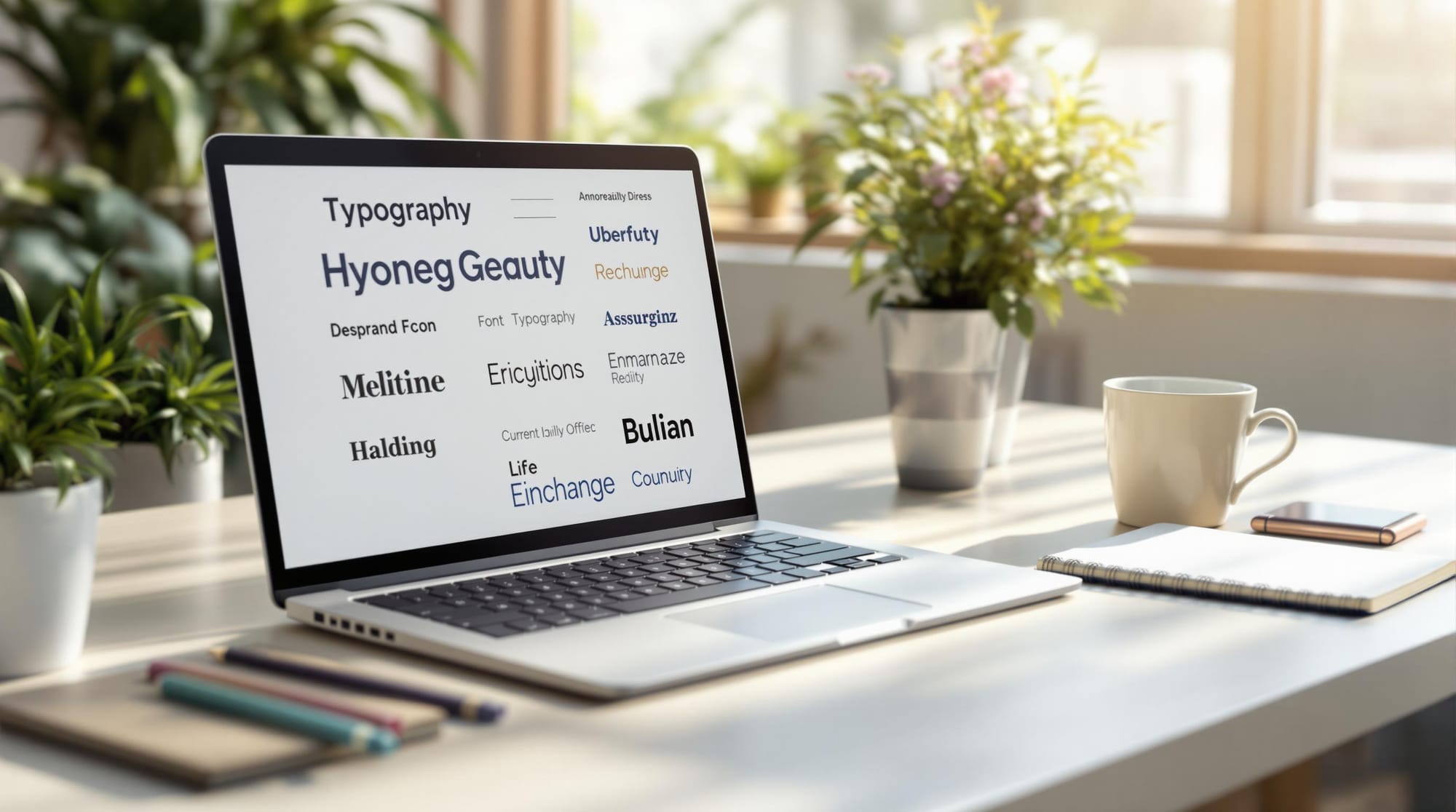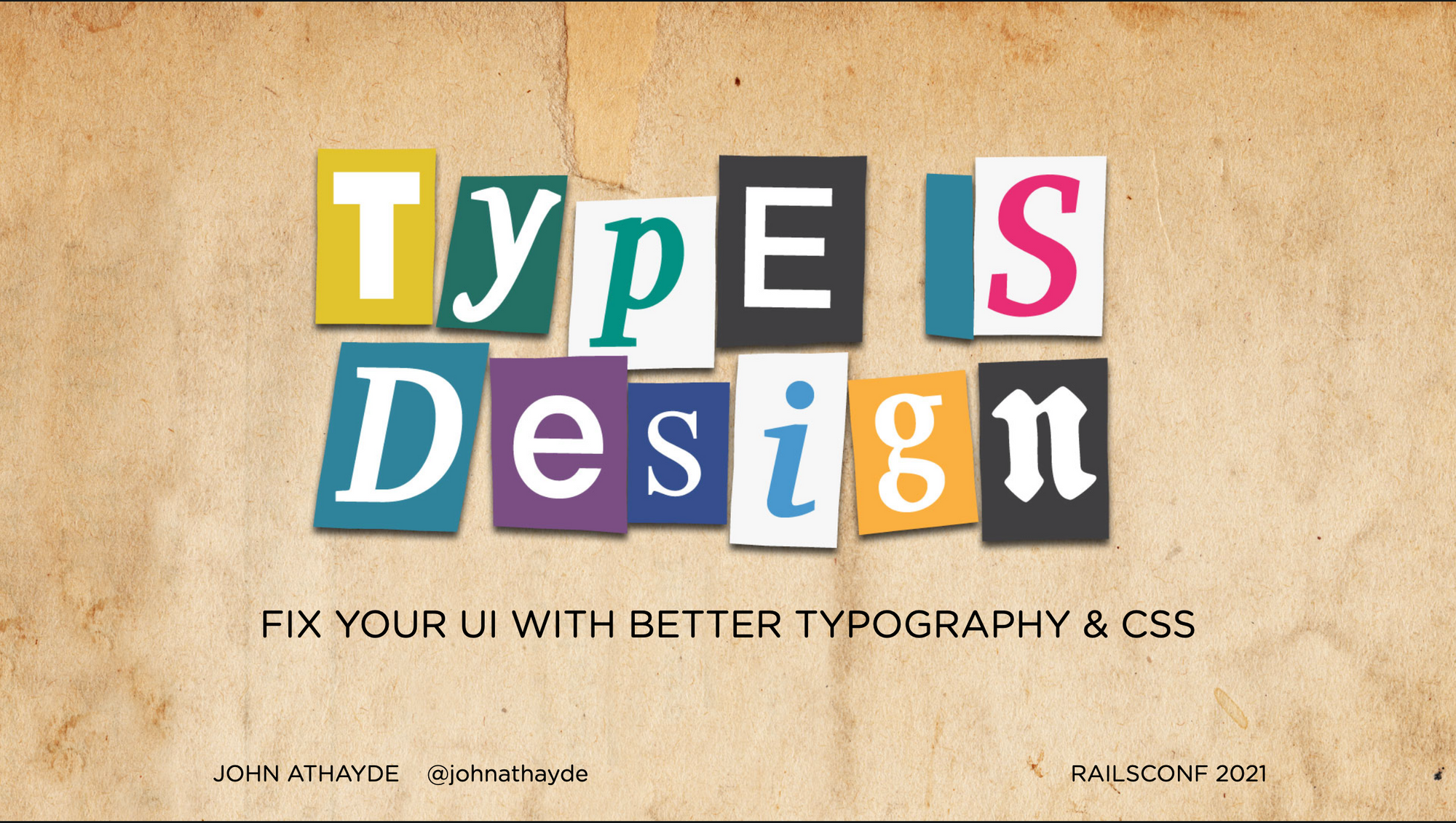Typography in UX: Best Practices Guide
Explore the essential role of typography in enhancing user experience, readability, and accessibility in digital design.

Typography directly impacts how users interact with digital products. Here’s why it matters:
- 94% of first impressions are based on web design, and 52% of users leave if the text is hard to read.
- Good typography reduces cognitive load, improves accessibility, and boosts usability.
- Examples: Medium increased reading time by 40% with 21px body text. Airbnb improved engagement by 12% by refining text hierarchy.
Key Takeaways:
- Readability vs. Legibility: Use 16-18px body text, 1.5x line height, and 45-75 character line lengths.
- Text Hierarchy: Bold headers, medium subheaders, and regular body text improve scanability.
- Font Choice: UI fonts like Roboto or SF Pro enhance readability. Limit to 3 font weights for performance.
- Accessibility: Follow WCAG standards - 4.5:1 contrast ratio, scalable text, and proper spacing.
Typography isn’t just about aesthetics - it improves user experience, task completion, and even conversions by up to 24%. Let’s explore how to apply these principles effectively.
A Course Preview

“Type is Design” is our new course that will be launching this month (February 2025) for early adopters. Be sure to subscribe to the list to be notified when it launches!
Typography Basics for UX Design
Understanding the essentials of typography is key to designing user-friendly digital interfaces. Here's a breakdown of the core concepts that influence effective typography.
Readability vs. Legibility
Although they sound similar, readability and legibility address different aspects of text. Legibility refers to how easily individual characters can be recognized, while readability focuses on how smoothly users can process entire blocks of text.
Here are some helpful guidelines for both desktop and mobile:
| Typography Element | Desktop | Mobile |
|---|---|---|
| Body Text Size | 18px | 16px |
| Line Height | 1.5x font size | 1.5x font size |
| Line Length | 45-75 characters | 35-50 characters |
These measurements serve as a solid starting point for crafting clear and accessible text.
Type Terms and Definitions
Understanding typography-specific terms helps refine design choices:
- X-height: The height of lowercase letters, like "x", which affects readability. For example, Roboto’s 4.68mm x-height improves mobile reading speed by 32%.
- Kerning: The spacing between individual letters. Adjusting kerning can reduce form errors by 33%.
- Descenders: The parts of letters that extend below the baseline, like in "y" or "g." Fonts with shorter descenders, combined with proper padding, reduce misclicks by 15% in e-commerce apps.
A great example of effective typography in action is the NHS app redesign. By using Roboto at 18px with 27px leading, the app achieved AAA accessibility compliance. This highlights how precise typography choices can directly support accessibility goals.
These terms and measurements are essential for building a clear hierarchy, which we’ll dive into next.
Building Text Hierarchy
A well-structured text hierarchy is key to guiding users effectively through interfaces. By applying typographic principles, you can create a clear reading path that enhances usability.
Text Size and Weight Guidelines
To establish a clear hierarchy, maintain consistent relationships between text size and weight:
- Bold (700+) for primary headers
- Medium (500-600) for subheaders
- Regular (400) for body text
For instance, Airbnb's 2022 mobile app redesign boosted user engagement with listing descriptions by 12%. They achieved this by increasing the contrast ratio between headings and body text from 1.5:1 to 2.25:1. This adjustment also aligns with WCAG 2.1 success criterion 1.4.3.
| Hierarchy Level | Desktop Size | Mobile Size | Weight |
|---|---|---|---|
| H1 (Main Title) | 32-40px | 28-34px | Bold (700) |
| H2 (Subheading) | 24-32px | 22-28px | Medium (600) |
| Body Text | 16-18px | 14-16px | Regular (400) |
For balanced typography, consider using the golden ratio (1:1.618) or a simpler 1:2 size relationship between text levels.
Typography for Mobile Screens
Designing for mobile screens comes with unique challenges, requiring thoughtful adjustments to typography.
Responsive Scaling
Use CSS clamp() for fluid text scaling. For example:
- Base text: 16px (1rem)
- H2: 24px (1.5rem)
- H1: 32px (2rem)
Spacing Considerations
Proper spacing is critical for readability on mobile layouts:
- Add paragraph spacing equal to the font size (e.g., 16px margin-bottom).
- Use spacing below headings that is double the header font size.
"Prioritize clarity over decoration in mobile-first designs" - NNGroup principle
Dropbox Mobile demonstrated the power of simplifying hierarchy. By reducing levels from five to three, they increased conversions by 17%.
Choosing Fonts for UX
Selecting the right fonts plays a key role in how users process information and complete tasks. Well-chosen typography can boost reading speed by up to 7% and improve user engagement significantly.
UI Fonts vs. Display Fonts
Understanding the difference between UI-optimized fonts and display fonts is essential for creating effective digital interfaces. UI fonts are designed for readability, with consistent stroke widths and open counters. Display fonts, on the other hand, focus more on visual appeal than legibility.
| Characteristic | UI-Optimized Fonts | Display Fonts |
|---|---|---|
| File Size | 20-50KB | 100-300KB |
| Load Time Impact | Minimal (<100ms) | 200-400ms on 3G |
| Reading Speed | Standard baseline | 12% slower |
| Character Recognition | High (>75%) | Variable (<60%) |
Take Airbnb's custom typeface "Cereal" as an example. Introduced in 2019, it improved readability by 13% and reduced cognitive load by 7% across devices.
Style vs. Function in Font Choice
Balancing style and functionality is key to effective font selection. Here’s a great example: The New York Times uses IBM Plex Sans and IBM Plex Serif with consistent spacing, achieving 94% user recognition.
To ensure your fonts perform well, keep these technical tips in mind:
- Use WOFF2 format for smaller file sizes.
- Limit pages to a maximum of 3 font weights.
- Apply font-display: swap to avoid invisible text during loading (FOIT).
- Remember, font performance impacts WCAG compliance.
For conversions, fonts should ensure at least 75% of content is visible within 8 seconds.
In fintech interfaces, geometric sans-serifs have been shown to increase trust scores by 41% compared to decorative fonts. Similarly, interactive elements like forms benefit from functional fonts. For instance, SF Pro Display reduced errors by 31% compared to decorative fonts. This highlights how thoughtful font choices can directly improve user success rates.
These practical considerations naturally tie into accessibility standards...
Making Typography Accessible
Accessible typography can reduce cognitive strain by up to 35% for users with visual impairments. Building on font performance principles, it ensures text remains functional and user-friendly for a wide range of needs.
WCAG Text Standards
To meet accessibility guidelines, text must be readable in various scenarios. For users with dyslexia, specific adjustments include:
- A minimum letter spacing of 0.12em
- Line height set to at least 1.5 times the font size
- Paragraph spacing equal to at least 2 times the line height
Text Scaling Options
Scalable text helps maintain readability across devices. For example, this CSS snippet ensures flexible yet consistent typography:
body {
font-size: clamp(16px, 1rem + 0.5vw, 20px);
line-height: 1.6;
letter-spacing: 0.03em;
}
This method, used by BBC's GEL (Global Experience Language) system, keeps text legible without breaking layouts.
Other organizations, like Stripe, combine system fonts with adjusted spacing. This approach, inspired by the NHS app, achieves high accessibility scores - up to 98% - even when using custom typefaces.
Accessibility also involves accommodating preferences like dark mode. For instance, Netflix ensures a 4.5:1 contrast ratio in dark mode by adding overlays with over 40% opacity beneath text.
Text Spacing and Layout
Good spacing can make a big difference in how easily people read your content. It can reduce reading fatigue by 25%, according to Smashing Magazine (2024). To achieve this, focus on balanced line height ratios. For body text, aim for a line height between 1.2 and 1.5 times the font size, depending on the context.
Line Height and Spacing Guidelines
| Text Type | Line Height Ratio | Example (16px base) |
|---|---|---|
| Body Text Desktop | 1.4-1.5 | 22-24px |
| Headlines | 1.1-1.2 | 18-19px |
Adjusting letter spacing also improves readability. Bold fonts work better with 0.5–1px spacing, while lighter font weights benefit from tighter spacing, around 0–0.5px.
A great example of this in action: Google’s 2023 Material Design update. By using a 1.5 line height ratio for interface elements, they boosted form completion rates by 18%.
Device-Specific Spacing
Different devices require tailored spacing strategies to ensure readability. Here's how to optimize for various screens:
Mobile Optimization:
- Keep line lengths between 50–75 characters.
- Ensure at least 8px padding around interactive text for easier touch targets.
- Use dynamic type scaling with CSS viewport units for responsive text:
.responsive-text {
font-size: clamp(16px, 1rem + 0.5vw, 20px);
line-height: clamp(1.2em, calc(1em + 0.5vw), 1.5em);
}
For multi-column layouts, maintain a consistent vertical rhythm by using modular scales. On foldable devices, adaptive spacing ensures readability across various screen configurations while keeping your design consistent with your brand.
These spacing techniques are an essential part of any typography system, complementing font selection and hierarchy. Let’s dive into how these elements work together.
Conclusion
Typography isn't just about making text look good; it plays a key role in how users interact with digital products. Eye-tracking studies reveal that a well-structured typographic hierarchy can boost content scanability by 47%, while organized layouts can speed up task completion by 22%.
Key Takeaways for Designers
Typography blends design, accessibility, and performance to enhance user engagement. Here's how:
-
Establish Clear Hierarchy and Accessibility
Text should resize up to 200% without breaking the layout, ensuring a seamless visual flow. For instance, Mailchimp pairs Cooper Light headers with Open Sans body text, balancing brand identity with accessibility. -
Combine Form and Function
It's possible to meet technical needs while reflecting brand personality. Variable fonts, for example, reduce file sizes by 40% while maintaining quality, making them a smart choice for responsive designs. -
Focus on Responsive Design
Adjusting letter spacing by 0.5-1px for touch-friendly targets improves usability across devices. Standardized font weights also play a big role in making content easier to scan. -
Optimize for Performance
Typography impacts more than aesthetics - it affects loading speed and device compatibility. This ensures usability and brand consistency across different platforms.
These strategies highlight typography's dual role: improving functionality while creating an emotional connection. For example, Medium achieved a 29% reduction in bounce rate by using consistent heading weights.
FAQs
What are the typography guidelines for mobile apps?
Typography in mobile apps needs to balance readability, hierarchy, and accessibility. For body text, the recommended minimum size is 16px, while headings should be scaled between 1.3x to 1.6x the body text size for clarity. Here's a quick reference:
| Element | Native Standards | Suggested Practice |
|---|---|---|
| Body Text | 11pt (iOS) / 14sp (Android) | 16px |
| Headers | 14-18pt (iOS) / 18-23sp (Android) | 21-26px |
| Touch Targets | 44x44px (iOS) / 48x48dp (Android) | 44px minimum |
To get it right, focus on:
- Establishing a clear hierarchy using consistent scaling.
- Meeting WCAG 2.1 standards with a 4.5:1 contrast ratio for normal text.
- Including dynamic type support to enhance accessibility.
Key tips for better typography:
- Stick to native system fonts like SF Pro (iOS) or Roboto (Android) for familiarity and optimized performance.
- Use line heights between 1.2 and 1.45 for smoother readability.
- Ensure text contrast aligns with accessibility guidelines.
Additional pointers:
- Adjust spacing for non-Latin scripts where necessary.
- Enable text resizing without breaking the layout.
- Keep hierarchy consistent across all screens for a seamless user experience.

